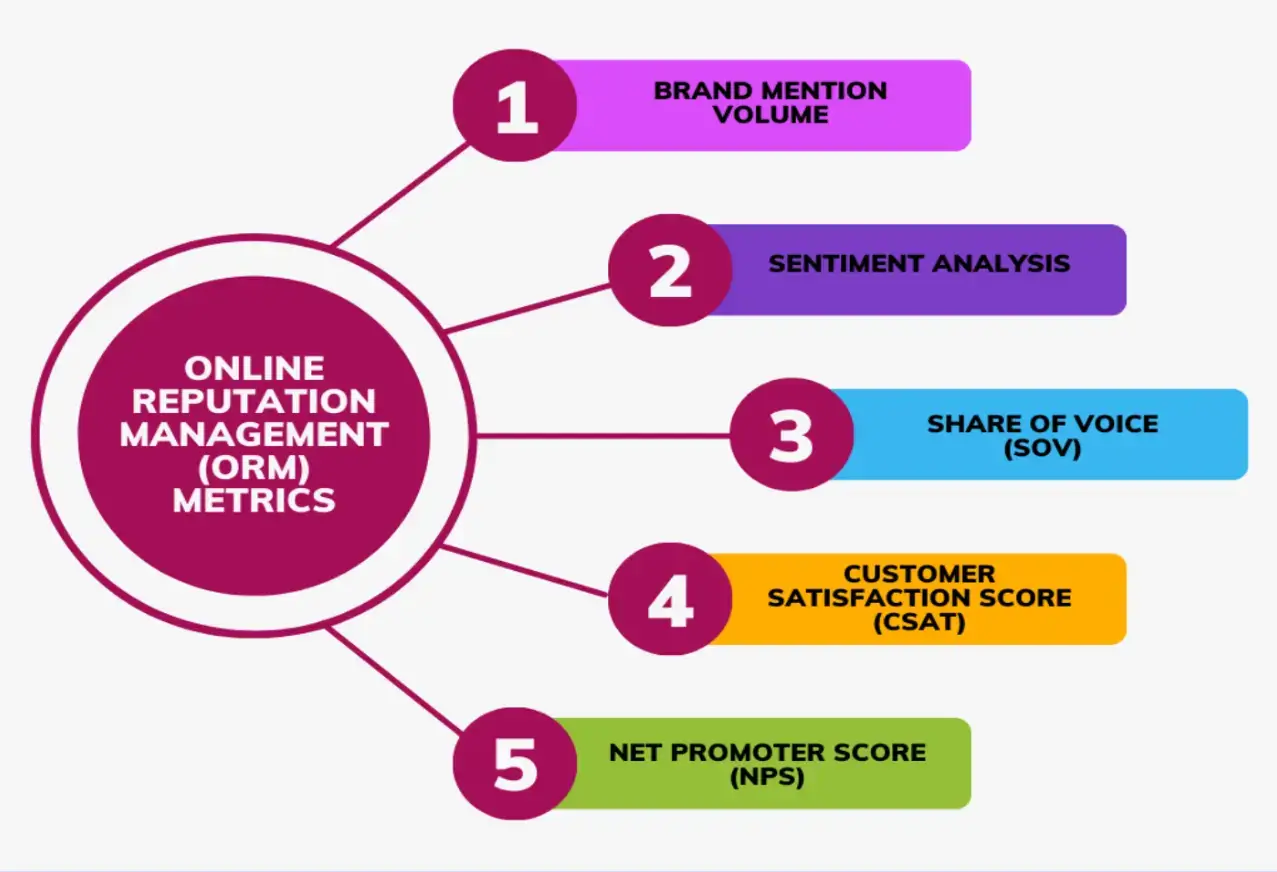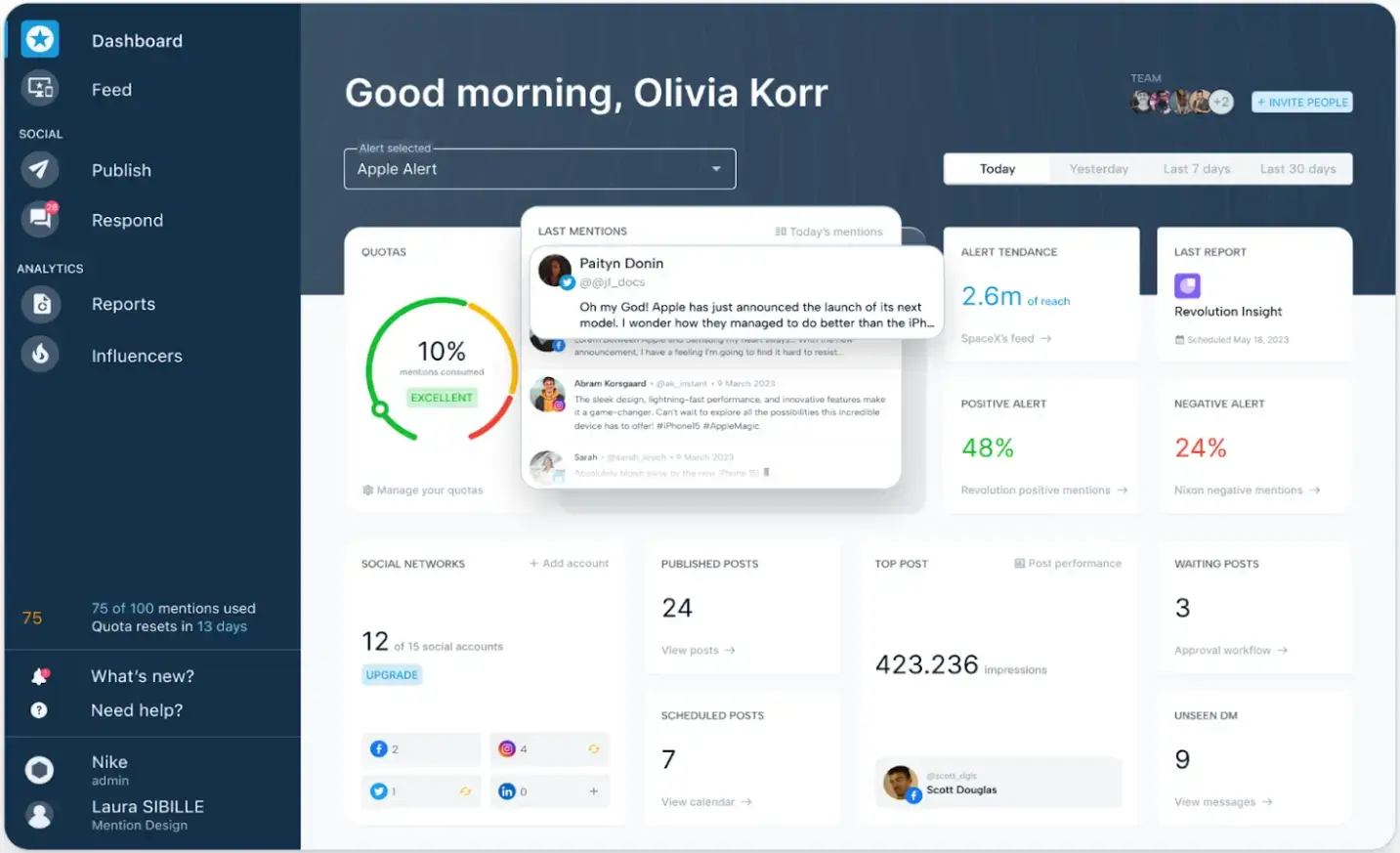Nowadays, your brand’s reputation doesn’t just live in your storefront or pitch deck—it lives online, in reviews, tweets, blog posts, and comments you might not even see.
Whether it’s a glowing five-star review or a frustrated tweet that gains traction, what others say online can directly impact your sales, partnerships, and overall credibility.
That’s why staying in the loop (and ahead of the curve) is crucial for any brand. It’s also why you must have a solid online reputation management strategy.
In this post, we’ll talk about why online reputation must be guarded at all costs and what you can do to ensure yours is squeaky clean. As a bonus, we’ve tapped into the wisdom of entrepreneurs and experts who’ve been there, done that, and have the reviews to prove it.
Let’s dig in.
Article Shortcuts:

Source: Pixabay
Why Your Online Reputation Matters
What people say (or don’t say) about your brand, products, and services has a direct influence on your sales figures.
Even though you may have heard otherwise, recent data shows that 75.5% of consumers trust online reviews. Also, a recent survey found that products that have five or more reviews are 270% more likely to be purchased than products with no reviews.
The results are pretty straightforward: A strong online presence and positive reputation will attract new customers, while negative reviews or no reviews can deter potential business.
Furthermore, a positive online reputation helps build trust and loyalty among your audience.
Consistently positive online interactions and feedback reinforce customer confidence, encouraging long-term relationships and brand advocacy.
Brands like Chipotle, CrossFit, and even the giant that Netflix is today started with word-of-mouth marketing. At their humble beginnings, these brands preferred to cultivate a strong brand identity and reputation rather than invest in flashy but empty marketing strategies.
Top Strategies for Online Reputation Management
Mastering your Online Reputation Management (ORM) is about staying proactive, transparent, and responsive. Yet, when you don’t know where to start, things can get a bit confusing.
The good news is that you have resources, expert advice, real-life examples, and tools that help you learn how to establish a strong online presence. You just need to find the right strategies for your niche and apply them relentlessly.
That’s where we come in. We talked with a few experts and entrepreneurs and put together a few tried-and-tested strategies (plus tips) to help you get that word-of-mouth started.
1. Track the Right Metrics to Measure Brand Sentiment
As Tatjana Savkovic, the SEO & Content Specialist at VanillaSoft, puts it:
"In sales, progress without measurement is merely guesswork. Identifying and tracking the right metrics transforms abstract goals into tangible milestones. By focusing on meaningful metrics, we empower our teams to make informed decisions, adapt strategies in real-time, and drive sustained success."
The same is true when you’re trying to build your brand reputation. You must know if you’re starting at ground level, lower, or higher to implement the correct strategies.
That’s where metrics and monitoring tools step in. They help you listen in on the digital chatter, giving you a clearer picture of what people are saying about your brand, your products, and even your competitors.
But not all data is created equal. You need to follow the right metrics; the ones that offer insight into brand sentiment, visibility, trust, and engagement.
So, let's check out some of the most important ORM metrics that every brand should be watching:

-
Brand Mention Volume
Track the number of times your brand is mentioned across various online platforms. An increase in mentions can indicate growing brand awareness, while the context of these mentions (positive or negative) offers insight into public perception.
-
Sentiment Analysis
Use sentiment analysis to gauge the emotional tone behind brand mentions. Understanding whether mentions are predominantly positive, negative, or neutral helps assess the brand's online reputation and identify areas for improvement.
-
Share of Voice
Measuring your brand’s share of online conversations within your industry. Compare the volume of your brand mentions against competitors, providing a benchmark for brand visibility and relevance in the market.
-
Customer Satisfaction Score
Often derived from customer feedback and reviews, this metric directly reflects customer satisfaction levels. Regularly monitoring this metric highlights strengths and pinpoints areas that need attention to enhance customer experiences.
-
Net Promoter Score (NPS)
This one measures customer loyalty and the likelihood of customers recommending your brand to others. A high NPS indicates a strong online reputation and customer advocacy.
-
Engagement Rates
Analyze engagement rates on social media posts, blogs, and other online content. High engagement rates signify effective communication and a positive connection with your audience.
-
Conversion Rates from ORM Campaigns
Track the conversion rates resulting from specific ORM efforts, such as response campaigns to negative reviews or proactive positive content marketing. Quantify the ROI of ORM activities.
2. Strengthen Your Online Presence Across Channels
Your brand’s online presence is often the first (and sometimes only) impression people get.
If that presence feels outdated, inconsistent, or inactive, it can damage your credibility before you even get a chance to make your pitch.
So start with your brand’s online identity. That means ensuring your website, social profiles, and business listings are all current, cohesive, and on-brand.
If someone Googles your business, what they find should instantly reflect your professionalism, values, and strengths.
Here’s how:
-
Website Design and Content
Create a website that stands as your digital flagship.
Prioritize user experience with intuitive navigation and compelling content that draws visitors deeper into your brand story. Focus on clarity and consistency in your messaging across all pages.
-
Social Media Profiles
Take charge of your social media by regularly updating your profiles with content that resonates with your audience. Engage in conversations, share insights, and post updates that reflect your brand's personality and values.
-
Business Listings
One of your goals is to make your brand or business as visible as possible.
When your social media channels are still new and your content strategy is not yet well-formed, you can use listings like directories, maps, review platforms, and industry-specific sites to let potential customers know you exist.
Platforms like Google Business Profile, Yelp, Facebook Business Page, or Bing Places for Business are great places to start.
Bonus Tip: Use local listening tools and analytics platforms to understand how the target audience interacts with your online properties.
3. Use Content Marketing and SEO to Build Authority
"A strong online reputation is built on the shoulders of an effective SEO strategy. Businesses that consistently deliver valuable content and optimize for search engines can easily establish authority in their industry, foster trust with their audience, and drive sustainable growth." — Chris Fawcett, President of Third Marble Marketing.
Content marketing and SEO strategies boost your brand’s online visibility and authority. But to get the right results, it’s important to craft informative, valuable content that addresses your audience's questions and needs.
Here’s what to focus on:
- Publish helpful, not just promotional content: Focus on solving real problems your audience faces. Blog posts, how-to guides, and FAQs build trust and show you know your stuff.
- Target reputation-friendly keywords: Use SEO to rank for terms like “best [your service] in [your city]” or “[your brand] reviews” so people find the good stuff first.
- Showcase customer success stories: Case studies and testimonials are great for reputation and SEO. Real results speak louder than buzzwords.
- Maintain a consistent content schedule: A stale blog or inactive site can make people question if you’re still in business. Keep it fresh to show you're active and reliable.
- Optimize for E-E-A-T (Experience, Expertise, Authority, Trust): Google loves brands that demonstrate these qualities—and so do customers. Highlight your credentials, experience, and trust signals throughout your content.
4. Earn Quality Backlinks to Boost Credibility

Source: Unsplash
Quality backlinks, from authority or well-established websites, are like digital votes of confidence. From a reputation standpoint, quality backlinks can do wonders.
First, they boost your visibility in search engine results, which means more people find you before they find your competitors. Second, backlinks from respected industry sites, media outlets, or blogs lend you instant authority by association.
Still, good backlinks are not easy to come by, especially when you’re just starting out.
One way to catch the big guys’ eye is by creating truly helpful, shareable content—think original research, how-to guides, or industry insights. Then, reach out to relevant bloggers, businesses, or niche publications and offer value in return.
Take the example of Rasa Sosnovskyte, the CEO of Growth Bite. She had an amazing idea to offer to participate in case studies with the tools or platforms her team was already using. These collaborations often led to features on the big vendor’s website, a backlink, and brand exposure to a new audience.
She shared one particular experience with us:
“Companies rely on positive testimonials, and we value authoritative backlinks. So, we identified all the tools used by the IPRoyal team and shared our success story in exchange for backlinks. Even Google benefits from strong testimonials—that’s how IPRoyal earned a feature on Think with Google.”
5. Encourage Positive Reviews from Happy Customers
With around 87% of online shoppers basing their purchasing decisions on reviews, you can’t afford to ignore this aspect. Positive reviews are digital word-of-mouth, and they build trust before you even speak to a potential customer.
Actively seek positive online reviews and ratings by asking satisfied customers to share their experiences. Yet, happy customers don’t always leave reviews on their own. They need a bit of encouragement and maybe an incentive to do so.
-
How to Solicit Reviews without Being Annoying
Simplify the review process for your customers.
Provide straightforward links to your profiles on Google My Business, Yelp, or Trustpilot. After a purchase or service, send out a follow-up email inviting them to share their thoughts on their experience.
Take Airbnb as an example. The platform prompts guests via email to review their experience after each stay. To make it easy, they link directly to the review section.
One great way to ensure no review opportunity goes unnoticed is to use tools like Trustmary. When integrated with your other daily tools, Trustmary can automatically collect feedback and reviews from your customers.
Additionally, it helps you highlight exceptional reviews on your website and across your social media platforms to spread the good word about your brand.
6. How to Handle Negative Feedback the Right Way

Source: Mention
The best way to address negative feedback is promptly and professionally. Approach the issue head-on in a respectful and constructive manner, showing your brand's dedication to making things right.
Suggest moving the discussion offline to resolve things in a more personal setting. However, if the communication happens over the phone, ensure you follow the TCPA Compliance rules, or don’t need legal troubles added to the mix.
Also, don’t take things personally. Recognize the feedback, apologize when necessary, and lay out how you plan to fix the issue. This approach has the best chance to transform critics into advocates for your brand.
Bonus Tip: Monitor your brand's digital presence for negative mentions. When you spot them, be quick to respond. As your brand grows, the volume of negative comments on platforms like Facebook and Instagram can become overwhelming, so tools such as CommentGuard help streamline moderation and prevent spam or unwanted content from slipping through.
Frequently Asked Questions
1. How often should I monitor my brand’s online reputation?
At a minimum, check in weekly. However, the best approach is to set up alerts or use tools that give you real-time updates. The faster you catch feedback (good or bad), the faster you can respond and protect your brand.
2. What should I do if someone leaves a negative review?
Don’t ignore it; respond professionally and quickly. A calm, constructive reply shows future customers that you care and handle criticism well. It’s also the best way to turn a critic into a loyal supporter.
3. Can I remove bad reviews from the internet?
Only in specific cases (like fake or inappropriate reviews) and only on platforms that allow it. Most of the time, it’s better to focus on encouraging more positive reviews to outweigh the negative.
4. How long does it take to build a strong digital reputation?
It’s a long game. With consistent effort, quality content, active engagement, and smart monitoring, you’ll see growth over time. Think months, not days. But once you’ve built it, it’s a powerful asset.
Final Thoughts: Stay in Control of Your Brand's Reputation
Your online reputation isn’t something you set and forget—it’s a living, breathing extension of your brand.
Whether it’s praise from a happy customer or criticism from a less-than-thrilled one, every mention is a chance to learn, grow, and lead the conversation.
Staying on top of both the good and the bad keeps you informed and in control. Celebrate the wins (and share them!), but don’t shy away from the rough spots.
Thoughtful responses and consistent effort can turn even a negative review into a trust-building moment.
Author Bio
Radostin Anastasov combines deep SEO knowledge with a focus on content strategy. Drawing from his work at SE Ranking, he specializes in search data analysis, content optimization, and performance tracking. His writing covers topics such as marketing, business, and technology.



